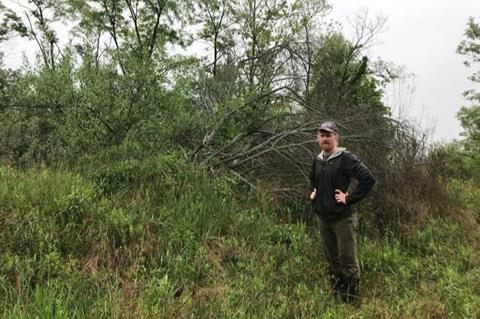Almost a ubiquitous presence in landscapes across Southwest Virginia, the invasive autumn olive thrives - but it’s not supposed to be here.
Autumn olive is known for its nitrogen-fixing ability, allowing it to thrive in poor soils and outcompete native plants. The shrub’s berries are edible, rich in antioxidants such as lycopene, and have a tart-sweet flavor. While its berries are beneficial for wildlife, the plant’s aggressive spread disrupts local ecosystems, reducing biodiversity.

With a one-year grant from the Powell River Project, located in Wise County, Virginia, Virginia Tech researchers are studying a native fungus that potentially could kill the autumn olive with minimal human interaction.
READ MORE: Researchers to deploy fungus to combat devilishly invasive tree-of-heaven
READ MORE: Scientists to explore role soil microbes play in helping hemlocks survive woolly adelgid
To remove the autumn olive currently, the plant needs to have its underground root system removed in addition to the destruction of the plant itself. This fungus could make this process much easier.
First step
“What we’re doing is the first step to confirm what’s actually happening to the autumn olives with this fungus,” said Carrie Fearer, the project lead and assistant professor in the College of Natural Resources and Environment. “What we’re doing is called Koch’s Postulates, which is proving the pathogenicity of the fungus.”
A few months ago, Sara Klopf, a research associate and co-principal investigator on the project, saw declining autumn olive with symptoms of cankers along the Powell River. There are no known pathogens that target the autumn olive. Depending on the outcome of the testing of the fungus, the researchers hope that this could lead to a biocontrol method for the invasive plant.
The other aspect of the grant is to map the extent of the symptoms of the autumn olive along the Powell River.
This project is a collaboration across Virginia Tech, including Jacob Barney and Pat Donovan of the College of Agriculture and Life Sciences, Daniel Putnam, a graduate research assistant in the College of Natural Resources and Environment, and Chris Fields-Johnson ’08, M.S. ’11, Ph.D. ’16 with the Davy Tree Institute.







No comments yet